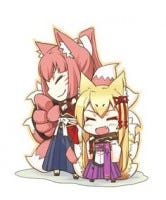Thoughts about Game Development: Player Agency
Some thoughts on Player agency. What is, what can be categorized as player agency, and some tips for what someone should keep in mind when thinking about incorporating it more heavily into a design

As the very first post on this site, I decided to talk about a fundamental aspect of game design that usually goes through a developer’s mind during the initial stage of development. The fundamental in question will be player agency and designing a game around it.
For most of those who browse this site this is most likely not a new concept or really something that needs to be gone over as you most likely already have a clear and vivid idea of what should and should not be done during development while keeping player agency in mind. As such, this is more of an extrapolation of my own thoughts and ideals used to aid those who do not already have a clear picture or are just starting out.
Therefore, before going into the actual design philosophies I use in regards to player agency I will first define and categorize it. Player Agency briefly summed up is the ability for the player to make meaningful interactions or choices within the game world. The key word in this definition is meaningful, as there can be as many interactions or choice in your games as there are grains of sand in a desert, but if they amount to nothing or do very little to change or enhance the experience of the player they are just as insignificant. A meaningful choice or interaction, as implied by the previous statement, has to be a conscious decision or interaction the player can perform that affects their experience with the game, whether this choice is positive or negative is up to the designer it once again must be notable to the player. These interactions can then be roughly broken up into two categories, Gameplay and Narrative, each having varying degrees of impact.
Narrative Interactions
The interactions that fall into this category as the name implies are those that affect the overall narrative of the game world. These are things such as, story and dialogue interactions, interactions with characters, the setting of the game world, interactions with the cultural/political landscape of the game’s populace and world, etc. These interactions generally affect the immersion of the player and their attitudes towards the game in the general. Something to take note of is that even if a game features a linear story with little to no story branches this does not mean the game lacks narrative interactions that affect player agency. Some examples of this are games like The Last of Us and the Fire Emblem Franchise. Both of these games have a linear story with almost no plot interactions and many of the ones within them do not affect the way it is told; however, it has a wealth of interactions in regards characters and world. In the case of the Last of Us, the side actions a player can perform to interact with Ellie clearly depicts and builds the relationship between her and Joel. Whereas in Fire Emblem each playable character are given supports that reveal more about themselves, their thoughts, and beliefs.
Gameplay Interactions
Gameplay Interactions are those that relate far more heavily towards the way in which the game is played, a stark contrast to the narrative interactions, which are more about the presentation of the world and its characters. A player’s choice of class or skills, the way in which a boss or encounter is finished, and even what items or resources a player decides to use are examples of gameplay interactions. These interactions directly influence the “fun factor” for a player. Many games have these be their so-called meat and potatoes as many systems and concepts usually hinge on the successful implementation of them. As these interactions are more tangible and quantifiable than narrative interactions, special care should be taken towards their implementation and use.
Degree of Influence
After that quick rundown of the different types of player agency, I will briefly talk about the degrees of which it can affect a game. The degrees of influence are not too hard to guess or even understand as they can be summed up neatly as heavily (or macro for those who like fancy words) or minute (micro). An example of each would Skyrim’s character creator, and most character creators in general, as micro influence, and BlazBlue’s character select as a macro influence. TO go into more detail for each, Skyrim’s character creator has very little impact on the game itself, merely changing the visual aspect of the player’s avatar and giving them a small bonus that quickly becomes irrelevant as the player progresses. The creator itself is meaningful as it gives the player freedom over how they want to look or represent themselves in the virtual land of Skyrim and allows them to develop a more personal connection with their play through and yet as it was stated before does not really affect anything in the game. In stark contrast to this BlazBlue’s character select has the player choose a variety of visually different characters with varied moves and playstyles that change the way of play, and in regards to its story/arcade mode has the player face off against different opponent, experience a different story and even potentially a different ending.
Now that player agency has been adequately defined and its types and degrees outlined we can go over some of the things to keep in mind while designing a game with or focused on player agency.
Context is King
As choices and interactions are placed in, the game one of the most important things for a designer to do is to give the player context. Even if the choices/interactions were too radically, alter a player’s experience with the game if they lack the information to understand what is happening or has happened it can result in the interaction being just as bad as or even worse than one that has no affect. As such, designers should strive to give the player as much information as necessary, whether it be implicitly or explicitly, in order for the player to both understand and choose the interactions they wish to affect their experience.
No hard rights turns
The no hard right turns primarily refers to having the interactions remain consistent in both their depth, spacing and number. Of course, this does not mean to have the same interaction continued ad nauseam throughout the game. It points more to having similar interactions not vary wildly in scope, breadth, or quality. A brief example would be having the player interact with two central NPCs that can be recruited to join them on their adventure the only difference between them being their respective backstories. The player interacts with both of them, completely the same number of events; however, the first leads to a long side quest that results in the growth of a character or the end of their arc, while interacting with the second leads to them changing their name after a brief conversation. The name change. With enough context such a situation maybe fine and even plausible, though the player will definitely notice the difference in quality and may even negatively influence their satisfaction with the game.
Less is more
Like in real life too much of anything, even if it is the greatest thing ever, is bad. To many variances, decisions or interactions can often leave a player feeling overwhelmed or in the worst-case scenario give the impression that they are all meaningless. There is an inevitable saturation point, and though it can be increased by offering a greater variance of types within the numbers of interactions, it is more of a stopgap measure. As such rather than seeking to add as many interactions as possible to a game, it is more important to go over the ones currently in the game and check which ones can be removed without reducing the quality.
Read more about:
BlogsAbout the Author
You May Also Like









